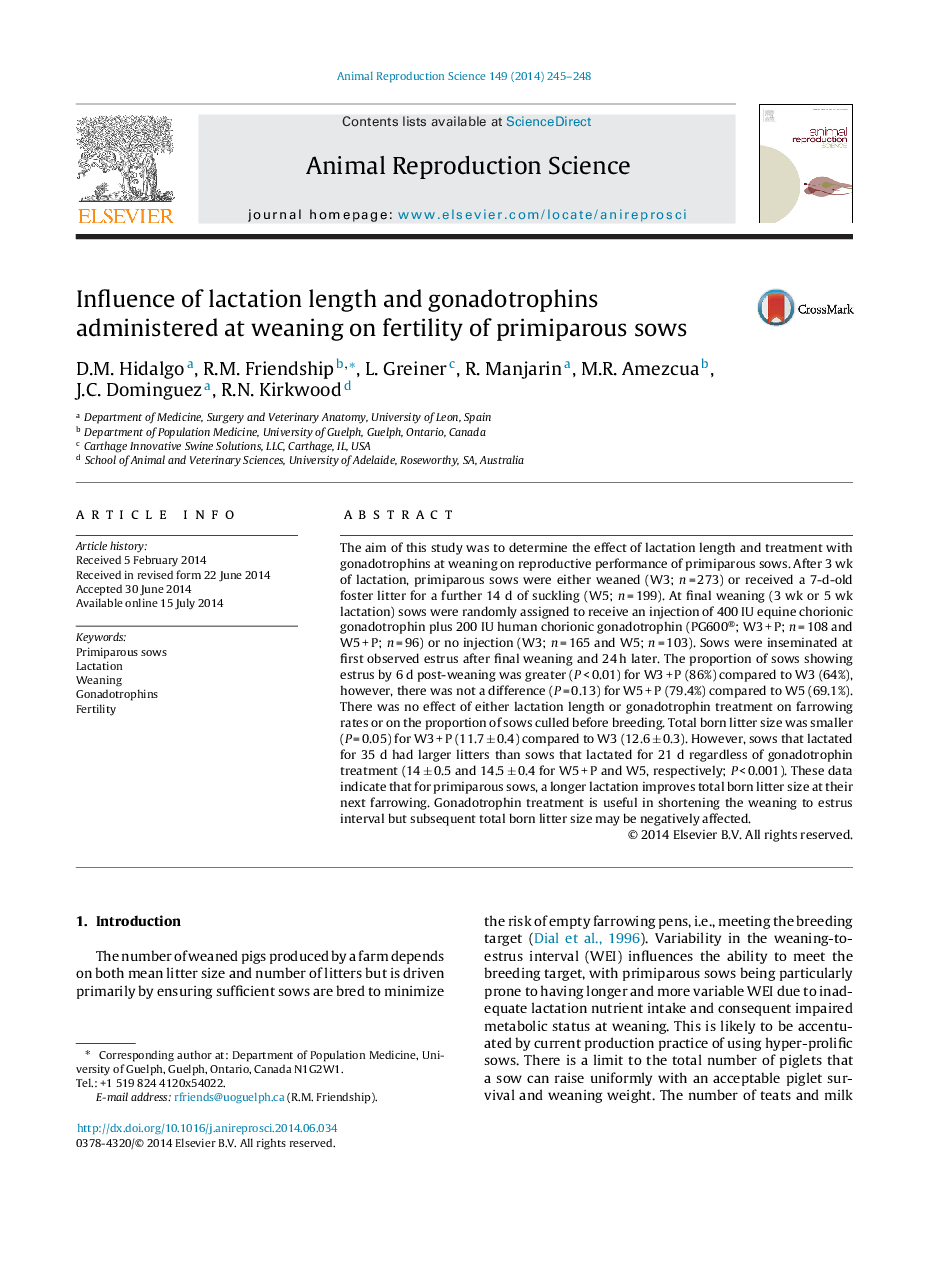| Article ID | Journal | Published Year | Pages | File Type |
|---|---|---|---|---|
| 8404632 | Animal Reproduction Science | 2014 | 4 Pages |
Abstract
The aim of this study was to determine the effect of lactation length and treatment with gonadotrophins at weaning on reproductive performance of primiparous sows. After 3 wk of lactation, primiparous sows were either weaned (W3; n = 273) or received a 7-d-old foster litter for a further 14 d of suckling (W5; n = 199). At final weaning (3 wk or 5 wk lactation) sows were randomly assigned to receive an injection of 400 IU equine chorionic gonadotrophin plus 200 IU human chorionic gonadotrophin (PG600®; W3 + P; n = 108 and W5 + P; n = 96) or no injection (W3; n = 165 and W5; n = 103). Sows were inseminated at first observed estrus after final weaning and 24 h later. The proportion of sows showing estrus by 6 d post-weaning was greater (P < 0.01) for W3 + P (86%) compared to W3 (64%), however, there was not a difference (P = 0.13) for W5 + P (79.4%) compared to W5 (69.1%). There was no effect of either lactation length or gonadotrophin treatment on farrowing rates or on the proportion of sows culled before breeding. Total born litter size was smaller (P = 0.05) for W3 + P (11.7 ± 0.4) compared to W3 (12.6 ± 0.3). However, sows that lactated for 35 d had larger litters than sows that lactated for 21 d regardless of gonadotrophin treatment (14 ± 0.5 and 14.5 ± 0.4 for W5 + P and W5, respectively; P < 0.001). These data indicate that for primiparous sows, a longer lactation improves total born litter size at their next farrowing. Gonadotrophin treatment is useful in shortening the weaning to estrus interval but subsequent total born litter size may be negatively affected.
Related Topics
Life Sciences
Agricultural and Biological Sciences
Animal Science and Zoology
Authors
D.M. Hidalgo, R.M. Friendship, L. Greiner, R. Manjarin, M.R. Amezcua, J.C. Dominguez, R.N. Kirkwood,
